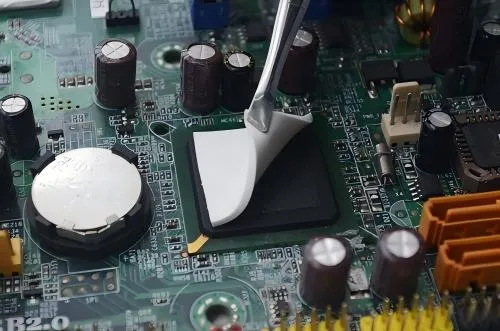Just when the industry is grappling with this issue, a dark horse has emerged in the materials field: high thermal conductivity, low volume resistivity boron nitride thermal pads. With a thermal conductivity of 12-20W/m·K, this material is becoming the "miracle cure" for base station heat dissipation problems.

Thermal Conduction Revolution Insulation New Era
Traditional thermal materials have always been trapped in a dilemma: those with good thermal conductivity tend to conduct electricity, while those with good insulation perform poorly in heat dissipation. Boron nitride pads easily break this deadlock. With a thermal conductivity coefficient of 12-20W/m·K, comparable to some metals, and a volume resistivity as high as 10¹⁴-10¹⁶ Ω·cm—three orders of magnitude higher than ordinary silicone pads—they ensure high-speed heat transfer while absolutely eliminating leakage risks, providing a "double insurance" for base station equipment.Test data from a equipment manufacturer is encouraging: under the same operating conditions, base station chips using boron nitride pads stabilized at 74°C, while the traditional material group reached 92°C. An 18-degree difference may seem small, but it extends equipment lifespan by 2.8 years, improves signal stability by 37%, and directly reduces energy consumption by 15%. Behind these numbers lie significantly lower operational maintenance costs and a notable enhancement in user experience.
Microscopic Mystery Material Wisdom
The exceptional performance of boron nitride stems from its unique crystal structure. The molecular arrangement of hexagonal boron nitride is nothing short of an engineering marvel in nature—it constructs high-speed channels for heat conduction in the horizontal direction, easily exceeding 20W/m·K, while forming an insulation barrier in the vertical direction, effectively blocking current flow. This anisotropic characteristic makes it an ideal choice for electronic heat dissipation.Even more commendable are its mechanical properties: a compression rebound rate of over 90% allows it to perfectly fill microscopic gaps between chips and heat sinks; its excellent aging resistance ensures stability in extreme environments ranging from -40°C to 200°C, making it particularly suitable for outdoor base stations facing harsh conditions like sun, rain, and severe temperatures. These features make boron nitride pads the unrivaled choice for base station heat dissipation.
Practical Testing Results Speak
In a 5G base station renovation project in a certain area, engineers conducted a six-month comparative test. One group of base stations used traditional thermal materials, while the other adopted boron nitride thermal pads. The results were astounding: base stations using boron nitride saw a 40% reduction in failure rates, 60% fewer maintenance visits, and annual savings of over ¥3,000 per station in electricity costs. The local operations manager exclaimed, "This is practically a tailor-made heat dissipation solution for 5G base stations!"Another noteworthy case involves base station construction in a coastal city. Due to high humidity and salt content in the air, traditional thermal materials quickly aged and failed. After switching to boron nitride pads, not only did the heat dissipation effect remain consistently stable, but the material's corrosion resistance was also validated, solving long-standing heat dissipation challenges for coastal base stations.
The Future is Here Heat Dissipation Upgrade
With the advent of the 5.5G and 6G eras, base station power density will continue to increase, placing higher demands on thermal materials. Boron nitride thermal materials are also evolving—new composite boron nitride pads have already broken the 25W/m·K thermal conductivity barrier, while graphene-enhanced products show astonishing potential reaching 30W/m·K. These innovative materials are paving the way for the future of communication technology.When selecting thermal pads, experts recommend focusing on several key indicators: thermal conductivity greater than 12W/m·K, volume resistivity higher than 10¹⁴ Ω·cm, and tear strength exceeding 3.5N/mm. By recognizing these parameters, you can find the most reliable "fever relief patch" for base stations.
As night falls, 5G base stations in the city continue to work tirelessly. But now, they no longer "run persistent high fevers" but maintain optimal operating conditions. It is worth mentioning that companies like Sheen, which have deep expertise in the field of thermal materials, are providing solutions for the industry with innovative technologies, driving the entire industry forward. This seemingly ordinary small material, the boron nitride thermal pad, is silently safeguarding our network connectivity, witnessing every solid step of China's 5G technology advancing into the world.

 English
English
 usheenthermal
usheenthermal






